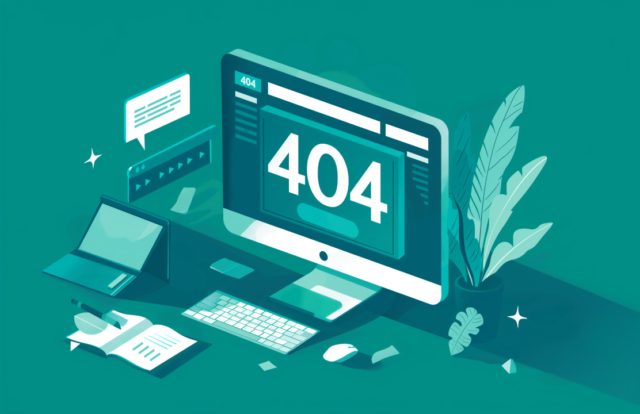In the world of web design, a 404 error page can often be seen as a nuisance. It signifies that a user has landed on a page that no longer exists or has never existed. However, instead of merely displaying a generic error message, an effective 404 page can turn a frustrating experience into an opportunity for engagement and retention. In this blog, we’ll explore tips for designing a 404 error page that not only informs users but also guides them back to your website.

Table of Contents
ToggleWhy a Good 404 Error Page Matters
A well-designed 404 error page serves several crucial purposes:
- User Experience: Instead of leaving users confused or frustrated, a creative 404 page can improve the overall user experience.
- Brand Identity: A unique 404 page can reflect your brand’s personality and tone, reinforcing your identity.
- Navigation: An effective 404 page can guide users to other parts of your website, helping them find what they were looking for.
- SEO Benefits: A well-structured error page can keep users on your site longer, reducing bounce rates and potentially improving your SEO performance.
Tips for Designing an Effective 404 Error Page
1. Use a Clear Message
The primary goal of a 404 error page is to inform the user that the page they are looking for cannot be found. Make sure to use clear and concise language. A straightforward message like “404 – Page Not Found” helps users quickly understand the issue.
2. Add a Touch of Humor or Personality
Injecting humor or a bit of your brand’s personality into the error page can create a more pleasant experience. For example, you might use playful language or a light-hearted graphic. Just ensure that the tone aligns with your brand’s voice and won’t offend users.
3. Provide Navigation Options
To help users find their way back to relevant content, include links to:
- Home Page: A clear link back to the main page can guide users back to familiar territory.
- Popular Pages: Highlight links to your most popular or important pages to direct users to valuable content.
- Search Bar: A search functionality allows users to enter keywords and find what they were originally looking for.
4. Include a Visual Element
Adding visuals can enhance the design and appeal of your 404 page. Consider using:
- Images or Illustrations: A relevant image or custom illustration can add personality and make the page visually appealing.
- Animations: Simple animations can create an engaging experience, but be careful not to overdo it, as they can become distracting.
5. Use a Call-to-Action (CTA)
Incorporating a clear call-to-action can encourage users to take the next step. This could be an invitation to explore your blog, check out your latest products, or sign up for a newsletter. A simple phrase like “Discover Our Bestsellers” can prompt users to continue engaging with your site.
6. Optimize for Mobile Devices
With more users accessing websites via mobile devices, ensure that your 404 error page is responsive and looks great on all screen sizes. A mobile-friendly design improves usability and keeps users engaged, regardless of the device they’re using.
7. Monitor 404 Errors
Use analytics tools to track 404 errors on your website. This can help you identify broken links and pages that may need updating or removal. Regularly monitoring and addressing these errors enhances the overall user experience and keeps your site functioning smoothly.
8. Provide a Feedback Option
Offering users a way to report broken links can be valuable. Include a simple feedback form where users can submit comments about their experience or the page they were trying to access. This feedback can help you improve your site and address issues promptly.
9. Keep It Simple and Clean
While it’s essential to make your 404 page visually appealing, avoid cluttering it with too much information. A clean and simple design ensures that users can quickly comprehend the message and navigate easily. Limit the number of links and focus on guiding users effectively.
10. Test Your 404 Page Regularly
Finally, make it a practice to regularly test your 404 page to ensure it functions correctly. Check that all links work, the search bar is functional, and the page displays properly across different devices and browsers. Regular testing ensures that users have a seamless experience, even when they encounter an error.
Conclusion
A thoughtfully designed 404 error page is more than just a placeholder; it’s an opportunity to enhance user experience, reinforce your brand identity, and guide visitors back to relevant content. By implementing these tips, you can transform a potentially frustrating moment into a positive interaction, keeping users engaged and on your site longer. Embrace the challenge of creating an effective 404 page, and watch it become an asset to your website rather than a liability!


No responses yet